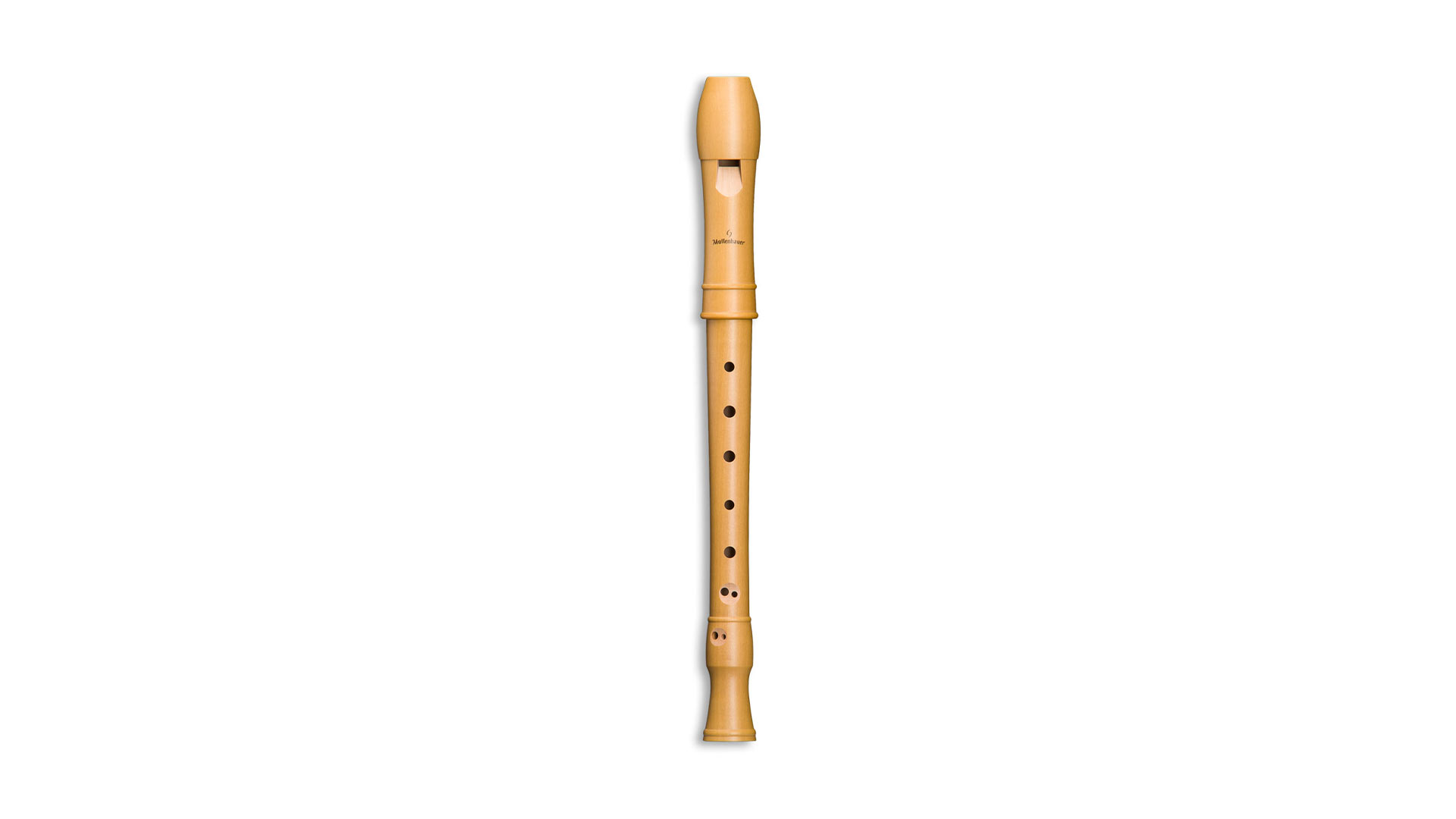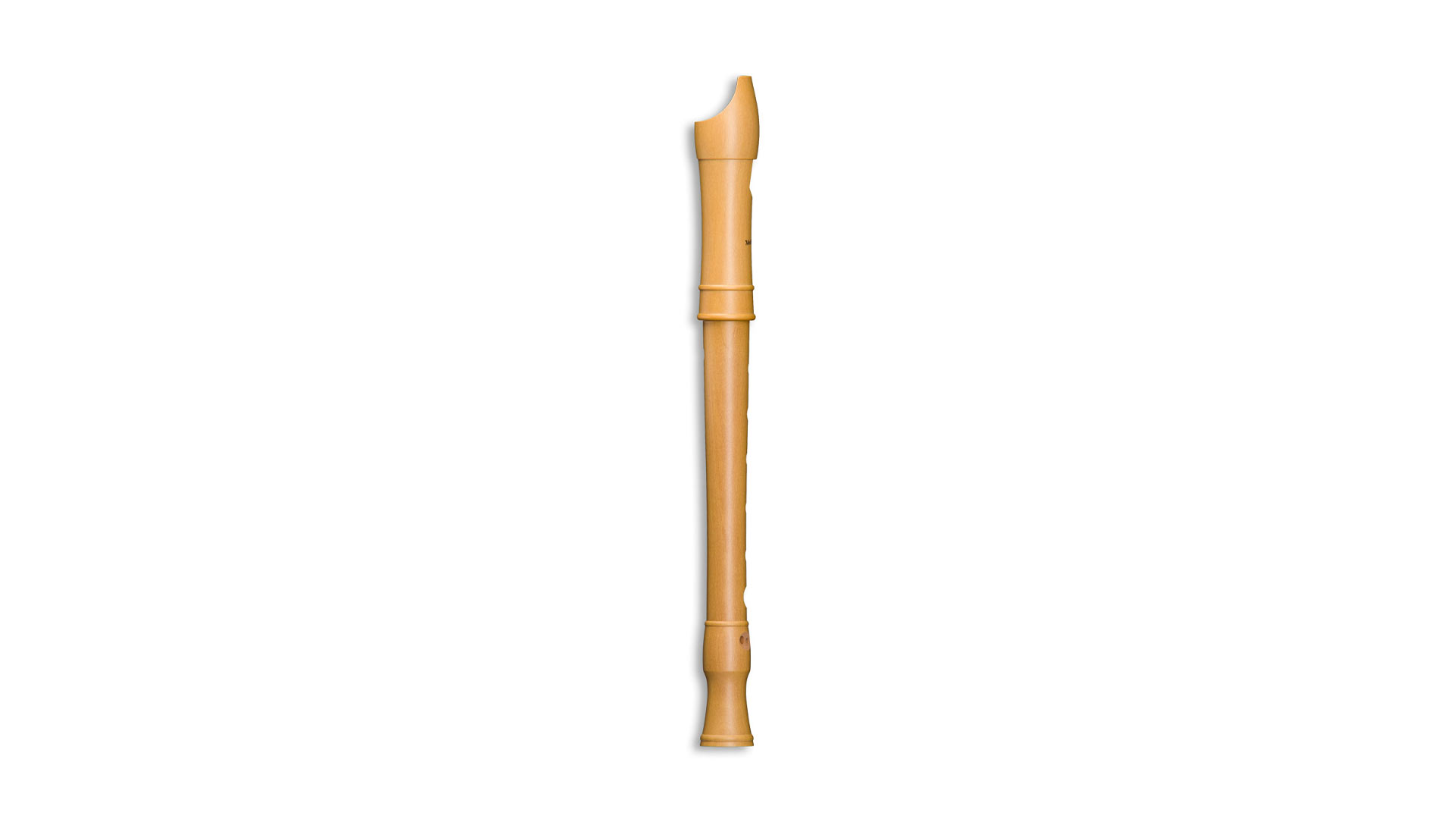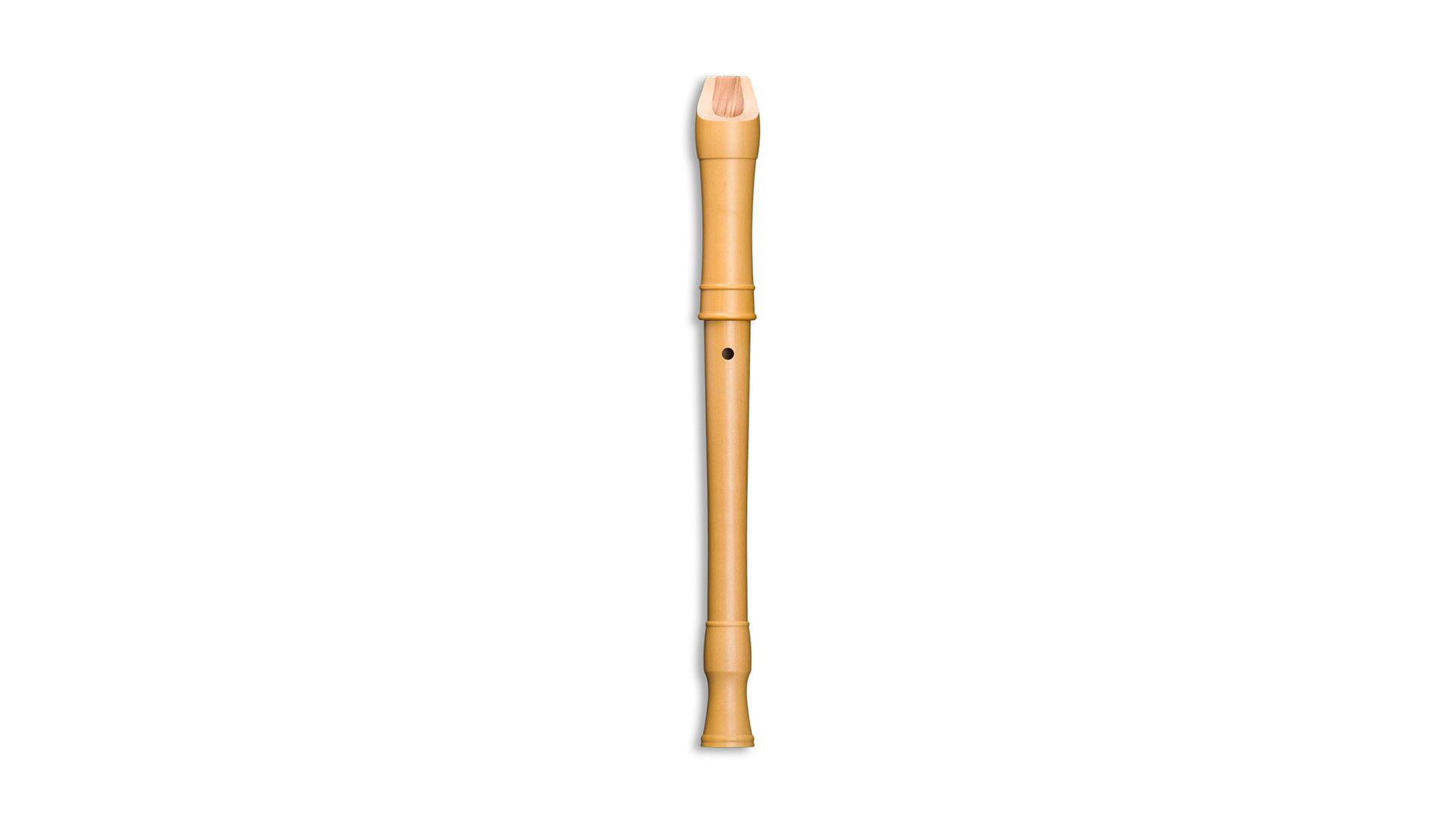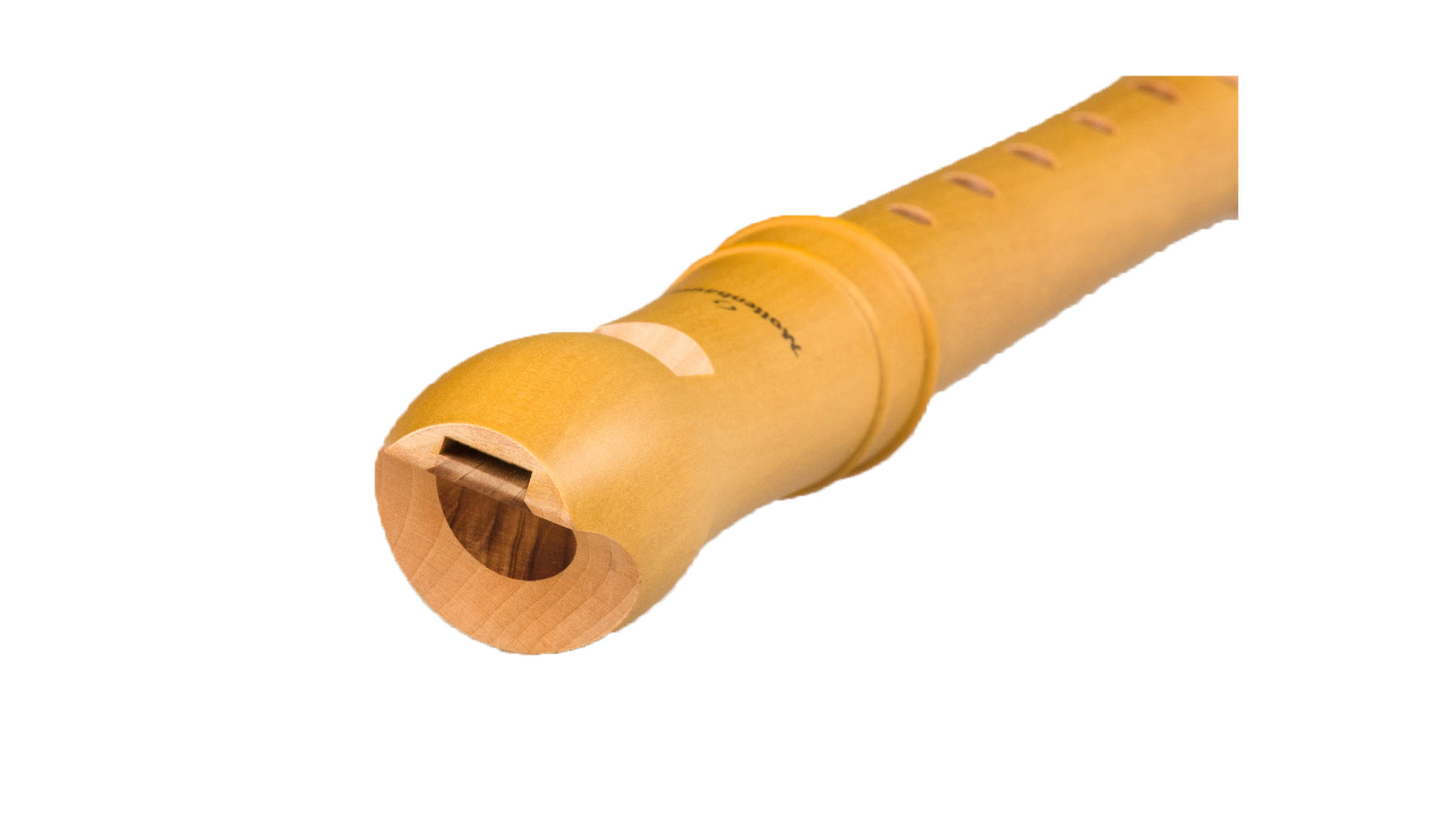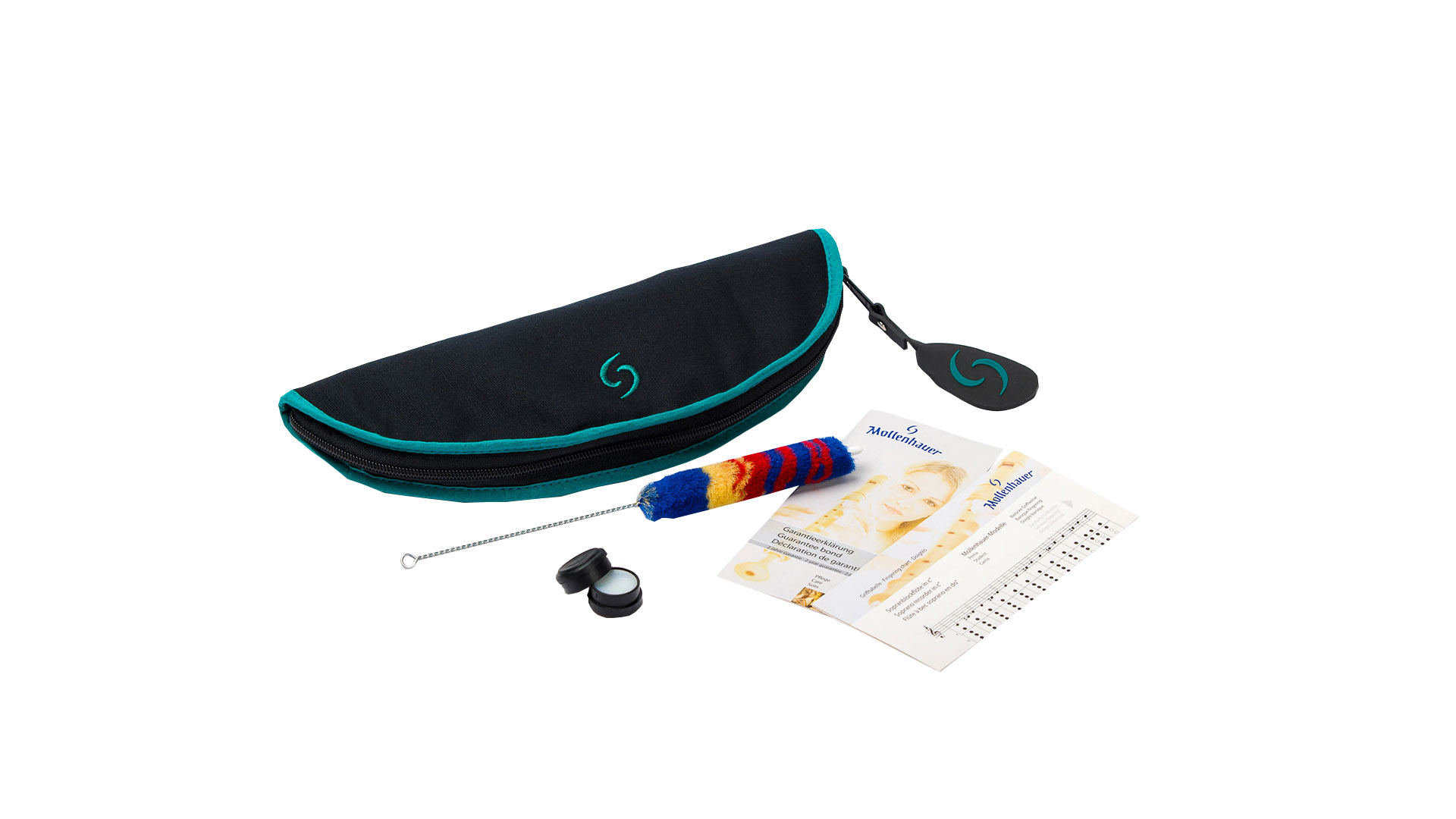Baroque Doublehole, Item: 2106-MOLL Natural, 442 Hz
This recorder with the model number: 2106-MOLL from Mollenhauer is a musical tool, that in making music constantly can make happy.
This peculiarity is due to the skillful combination of the groundbreaking instrument model in interplay with the expression of the material Pearwood.
The bore
The course of the inner bore of the recorder is light cylindroconical. This kind of bore shape gives the recorder such a characteristic sound.In principle, instruments with wider bore sound warmer, fuller, more fundamental and thus more suitable for ensembles than models with narrower inner bore.
For which music can this instrument best be used for?
Pearwood is particularly for recorders used for: focus on choral playing, recorder ensembles and orchestras, other styles are possible.To whom is this instrument addressed?
This means that recorders made of Pearwood are especially for ambitious amateurs and advanced players recommendable. A further valid principle is that a quality instrument makes the interaction naturally beautiful than a inferior low-cost bargain.The windway of the recorder
The windway is the area in the instrument headpiece where the blowing air is formed into a thin sheet of air. This air leaf is the central starting point of the recorders sound. At the labium, the air flow is very quickly alternately directed inwards and outwards. This swinging stream stimulates the air in the body of the instrument. And this is the origin of the recorder sound. This is the reason why the labium must never be damaged. The same rule applies to the windway. Otherwise suffer the musical shaping ability of the attainable sounds of the instrument.
The windway of the recorder 2106-MOLL of Mollenhauer has this windway shape: Straight cylindrical.Conical shaped windways accelerate breathing air more than cylindrical windways.
Never underestimate windway and labium! Their meaning for the voicing is exceedingly complex in their design. Even minor damages here often lead to a total loss!
Fingerings
The model Mollenhauer 2106-MOLL is offered in the following version: Baroque Doublehole .
Construction
The constructional design in terms of multipartness a musical instrument influences strongly the way with which the flute in daily use on the one hand is uncomplicated to handle in terms of easy assembling and on the other hand for the safe transport.
This is a point that should not be underestimated, especially when transporting larger (and sometimes multiple) instruments.
{Experienced ensemble players can tell you a thing or two about this. Or ask leaders of recorder ensembles.
Leaders of recorder choirs know how useful good and compact recorder packaging is.
Packaging and accessories
The model is offered as standard with: BagThe following accessories included: Wiper rod, drying cloth, pivot grease, care instructions, fingering chart
Recommendations before getting a new recorder
Inform yourself in detail!The search for your new instrument should in no case be influenced by "generally accepted" rules, such as "the the manufacturer xy does not work at all in an "ensemble/for professionals".
Get your own realizations after testing a recorder. Don't let "generally valid" rules, such as "the material xy doesn't work at all in an ensemble/for professionals.
Do not let others stop you from testing a unkown brand.
Your taste is as unique as you are.
Therefore, only you can decide which instrument will you.
Our recommendation is therefore: Play various brands!
After that you will be surprised and can make a confident decision.
Information about instruments with keys
Not always can the tone holes be drilled in the places in the that are easy to reach with the fingers. Especially with larger instruments sit for acoustic necessities some tone holes ergonomically not to reach. On such instruments, by the instrument maker keys are added, which make gripping easier, or possible in the first place.This allows it to be {pleasant|light|ergonomic|conspicuous|above average| good grip even by players with smaller hands.
The instrument 2106-MOLL has the following flaps:
| Accessories: | Wiper rod, drying cloth, pivot grease, care instructions, fingering chart |
|---|---|
| Bore shape: | light cylindroconical |
| Construction: | 2-part (head, bottom piece) |
| Fingering: | Baroque Doublehole |
| Material: | Pearwood |
| Material: Botanical name: | Pyrus communis |
| Material: Country of origin: | Austria |
| Packing: | Bag |
| Surface treatment: | Natural |
| Target group: | Ambitious amateurs and advanced players |
| Weight with case: | 0.193 kg |
| Windway: | Straight cylindrical |
| Size: | Soprano |
| Tuning pitch: | 442 Hz |
| Group: | Recorder |
| Material structure: | Pearwood: Very load-bearing with a fine-pored structure. |
| Musical use: | focus on choral playing, recorder ensembles and orchestras, other styles are possible |
| Sound characteristics: | Pearwood: Soft, choral sound. Suitable for playing in a group |
Login



